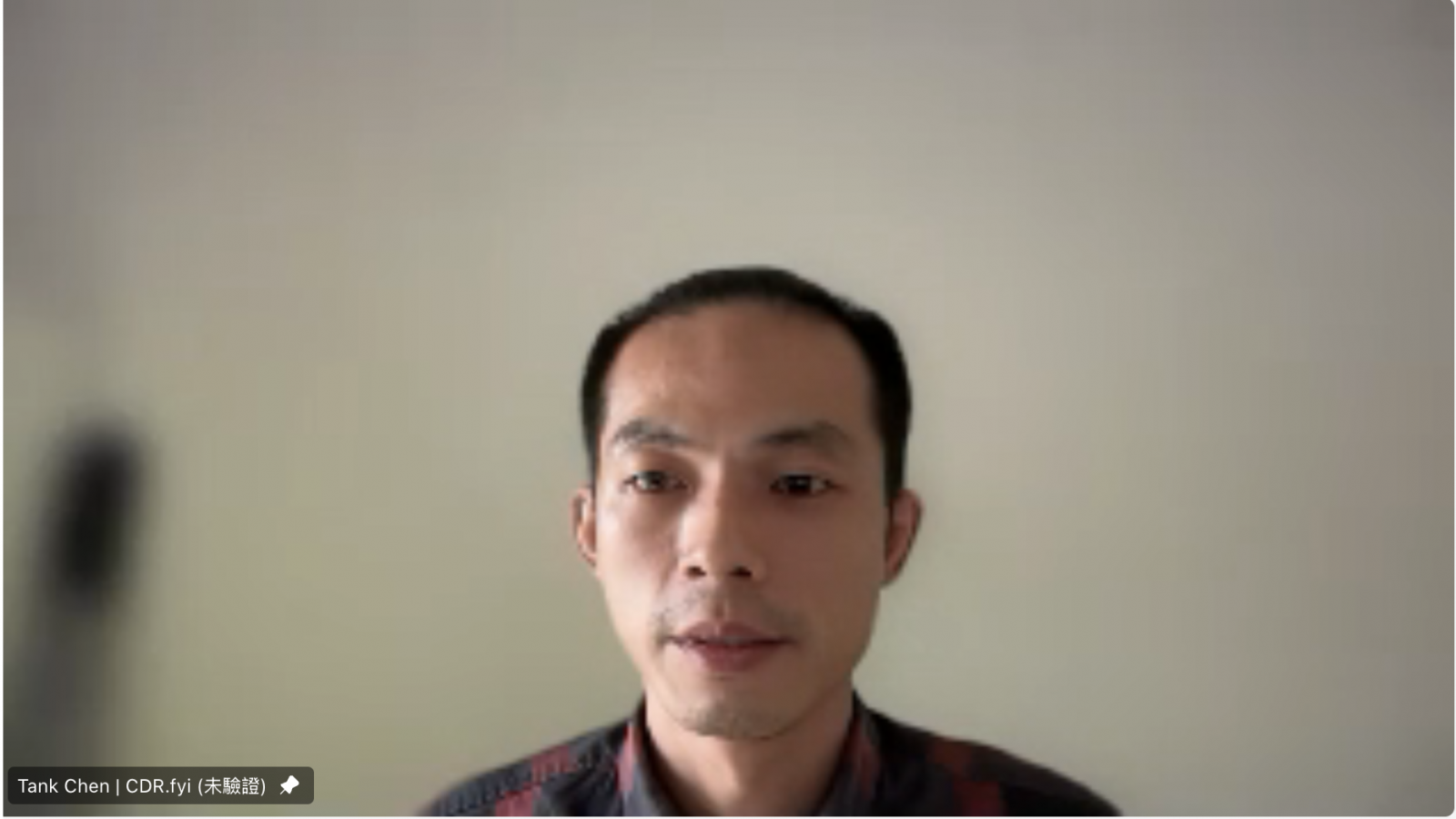
The carbon removal platform CDR.fyi enhances transparency in the carbon removal and carbon credit market through data registration, making the market more active. (Image: Tank Chen, CDR.fyi website)
From high school teacher to co-founder of the carbon removal platform CDR.fyi, Tank cultivated his interest through self-study. Not only did he build a worldwide carbon removal map, but he also earned recognition from experts and was invited to join the company’s founding team.
In an exclusive interview with RECCESSARY, Tank shares how he entered the carbon removal field and offers his perspectives on market prospects and commercialization.
Interest‐driven development of a carbon removal map leads to invitation to join CDR.fyi
“I often explain CDR.fyi to Taiwanese audiences by comparing it to a real-estate price registry platform,” Tank says, using a relatable analogy to describe what the platform does.
Two years ago, he left a stable position teaching English at a rural school and decisively threw himself into the carbon removal market. Although leaving behind a predictable livelihood might seem bold, Tank’s motivations were surprisingly straightforward: he stumbled upon carbon removal content by chance, and during his research he became fascinated by the topic and its market potential.
This curiosity led him to create an account on X (formerly Twitter) to follow expert opinions and emerging trends. Unexpectedly, he received encouragement from Robert Höglund, co-founder of CDR.fyi, which became the catalyst for his career transition.

Two years ago, Tank left a stable position teaching English at a rural school and decisively threw himself into the carbon removal market. (Image: Screenshot from video interview)
“He told me that if I wanted to enter this industry, I needed to generate value for the ecosystem,” Tank recalls. Taking Höglund’s advice to heart, he drew inspiration from a podcast and produced the first version of a global carbon removal map.
Upon seeing Tank’s map, Höglund immediately extended an invitation for him to join the founding team, making Tank one of CDR.fyi’s original co-founders. In just two years, that carbon removal map has become an essential reference for industry professionals; the number of companies and organizations it lists has grown from seventy to eighty initially, to over five hundred and fifty today.
CDR.fyi enhances market transparency and strengthens carbon credit credibility
Originally, CDR.fyi was an open-source project founded by Höglund and his partners, focused on aggregating carbon removal initiatives from around the world. It was not until 2024 that the platform formally registered as a Public Benefit Corporation (PBC) in Delaware. Operating on a “give and take” model, CDR.fyi allows any data partner contributing carbon removal or carbon credit transaction information to access the complete database at no cost.
Carbon removal involves using natural or engineered methods to reduce atmospheric CO₂ levels, with the resulting carbon credits helping industries decarbonize. However, the process of converting removal efforts into tradable credits tends to be cumbersome and lengthy, which leaves the market vulnerable to claims of exaggerated emissions reductions, double counting, and greenwashing controversies.
Tank believes that by providing a centralized registry of data, CDR.fyi increases transparency within the carbon removal credit market, thereby helping participants manage risk and invigorate market activity. “Through the platform, you can see who is buying, who is selling, and ultimately who retires the credits. You can also gauge prevailing market prices,” he explains.
At present, the CDR.fyi database includes information on more than nine hundred companies and organizations. Its membership base is unmatched by competitors, yet the platform’s main revenue stream comes from charging a subscription fee to a select group of non-data contributors—consultants, carbon credit brokers, and other intermediaries—while continuing to provide free access to those who submit data.
Tank admits that many project expenses are still shouldered out of pocket by individual team leads, driven more by idealism than by profit motives, all in the name of advancing the carbon removal industry.
Optimism for beccs development; vision for everyday carbon removal
According to a carbon removal report by Oxford University, there are at least fifteen distinct methods for reducing atmospheric CO₂—from traditional reforestation to cutting-edge approaches that are still at the pilot stage.
When asked which technology he believes has the greatest potential for large-scale deployment, Tank singles out bioenergy with carbon capture and storage (BECCS). “BECCS already has the highest share of delivered carbon credits,” he notes, making it among the most mature options in development.
Although many in the industry argue that a market boom hinges on lowering carbon removal costs to USD 100 per tonne (approximately TWD 3,000), Tank views that figure as more of a metaphor than a precise target—an expression to denote a very low price point that even the most established technologies are unlikely to achieve.
Rather than focusing on a dollar-per-tonne benchmark, he believes a more realistic cost reference is the “social cost of carbon,” meaning the overall economic damage caused by emitting one tonne of CO₂.
Looking ahead, Tank hopes that removing and sequestering carbon will become as routine as managing household waste—an everyday activity that all citizens support financially. “When the entire society shares those costs, scaling up becomes feasible, costs come down, and a robust supply chain can emerge,” he says, envisioning a future in which carbon removal is woven seamlessly into daily life.
The full article was translated by EnergyOMNI.
.jpg)